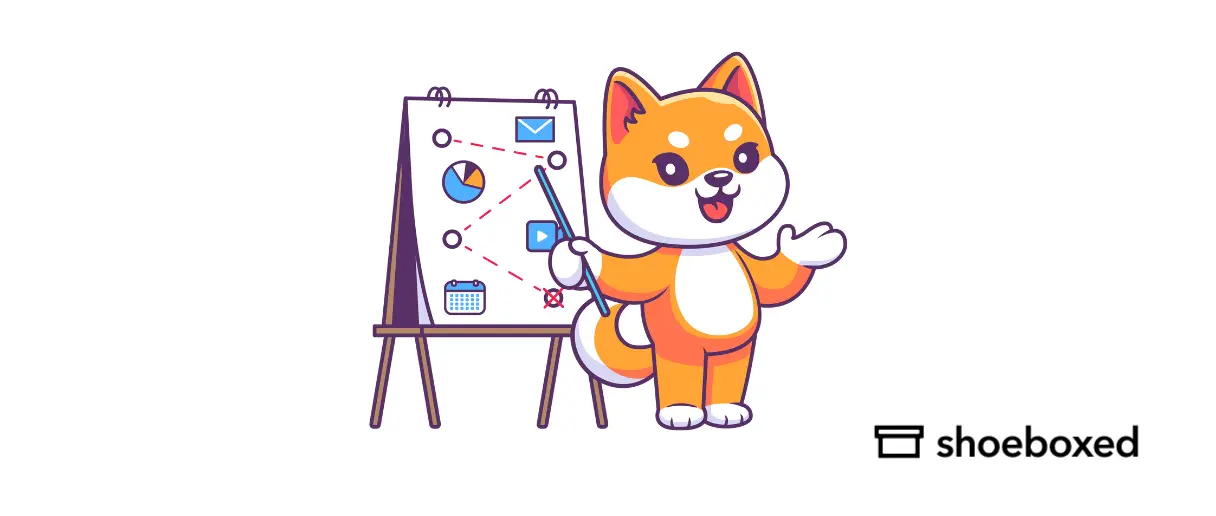Making a budget and sticking to it is the key to financial stability and success. It's the 'sticking to it' that's the hard part.
One of the most important parts of budgeting and financial planning is categorizing your expenses so you can track and manage your spending.
Budget categories give you a plan and structure to spend money to work towards your financial goals, whether it’s saving for a big purchase, paying off debt, or just getting in control of your daily spending.
What are budget categories?
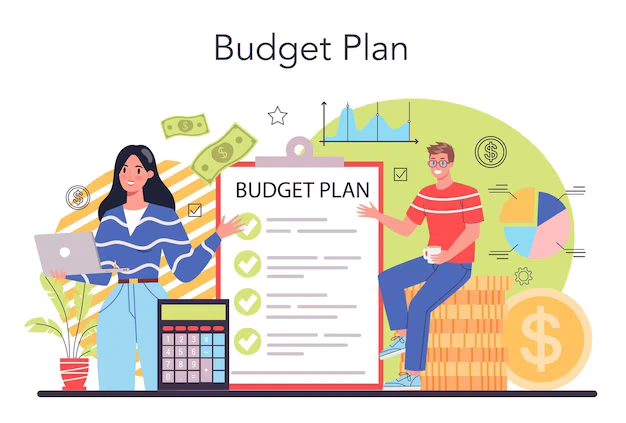
Budget categories are groups of expenses that help you analyze your spending habits. Each budget category covers a part of your financial life, such as essential budget categories like housing, food, or transportation. Establishing a budget allows you to observe and manage your spending categories.
By categorizing your monthly expenses, you can see where your money is going and make adjustments to align your monthly budget with your financial goals. These categories can be customized to your personal finances since you need to create a budget that works for you.
Why do I need a budget?
A budget is crucial for making smart financial decisions.
It helps you:
Prioritize your spending based on your financial goals.
Track your income and expenses so you can see where to improve.
Save money, build an emergency fund, and pay off debt.
Make conscious spending decisions so your money is being allocated correctly.
Manage your discretionary income to allocate towards non-essential expenses and financial goals.
Without a budget, you can lose track of your spending and end up in debt or experiencing financial stress.
What are the budget categories?

Here's a comprehensive list of budgeting categories that I have found to be the most efficient.
1. Housing expenses
Housing costs are usually fixed expenses and the biggest expense for most people and include:
Rent or mortgage payments
Property taxes
Home insurance
Money-saving tip: A general rule of thumb is to spend no more than 30% of your income on housing.
2. Utility
Utilities are essential and include:
Electricity, water, and gas
Internet and phone bills
Money-saving tip: Manage utility costs by reducing consumption and negotiating with service providers.
Allocate 5-10% of your income for utilities.
3. Transportation costs
Transportation costs include:
Auto loan payments and insurance
Fuel and maintenance
Public transportation costs:
Money-saving tip: You can reduce transportation expenses by carpooling or using public transit.
Allocate 10-15% of your income for transportation.
4. Food budget category
The food category includes:
Food expenses include groceries, dining out, and takeout.
Money-saving tip: Groceries can be a big chunk of the budget for an average family of four. It can be managed by meal planning, cooking at home, and reducing food waste.
Allocate 10-15% of your income for food expenses.
5. Insurance
Insurance includes:
Health
Life
Disability
Health insurance is a crucial budget category for protecting against unexpected medical expenses. Including health insurance premiums in your monthly budget means you’re prepared for any medical needs that may arise.
Money-saving tip: When choosing a health insurance plan, consider deductibles, copays, and coverage limits to get the best value for your money.
Allocate 5-10% of your income for insurance premiums.
6. Debt payments
Debt payments include:
Credit cards
Personal loans
Mortgage payments
Debt payments have an interest expense component, which is essential to consider when planning your budget.
Money-saving tip: You should prioritize paying off debt. Allocate a big chunk of your income for this, usually within the 20% savings and debt repayment category.
Miscellaneous
1. Health and fitness
Gym membership
Medical expenses
Wellness programs
Money-saving tip: Allocate 5-10% of your income for health and fitness.
2. Personal care and hygiene items
This includes maintenance, grooming, toiletries, and other personal care services and products.
Money-saving tip: Allocate 2-5% of your income for personal care.
3. Entertainment
Entertainment includes leisure activities, hobbies, streaming services, and travel.
Money-saving tip: Although your spending is discretionary, spend wisely and stay within your budget.
Allocate and spend 5-10% of your income.
4. Savings
This is for financial security and includes:
Emergency funds
Retirement savings
Long-term savings goals:
Money-saving tips:
a. Emergency fund
An emergency fund is an account that helps you save cash for unexpected expenses like car repairs or medical bills. To protect yourself from financial shocks, save 3-6 months’ living expenses in your emergency fund.
Consider setting up automatic transfers of extra money from your checking account to your emergency fund to make saving much more manageable. You can avoid debt and be financially stable by prioritizing your emergency fund.
b. Retirement accounts
Retirement accounts, such as 401(k) or IRA, are budget categories that help you save for the future and pay off debt. Contributing to a retirement account can help you build wealth, pay off debt over time, and have a comfortable retirement. Take advantage of employer-matching contributions to maximize your retirement savings.
Allocate 10-20% of your income for the future.
How to allocate your income
Allocate your income using the 50/30/20 rule:
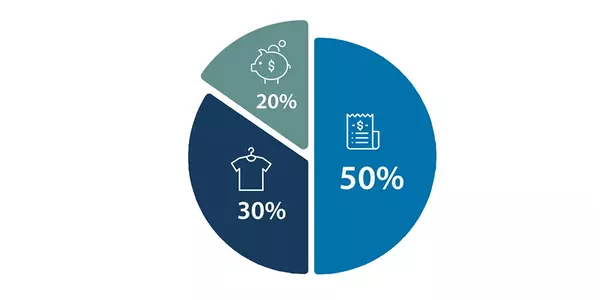
50% for essentials (housing, food, transport)
30% for discretionary spending (entertainment, eating out)
20% for savings and debt repayment
50/30/20 Budget
The 50/30/20 budget is the most popular way to allocate income: 50% for essentials like housing, bills, and food, 30% for discretionary spending like hobbies and entertainment, and 20% for savings and debt repayment.
By using the 50/30/20 budget categories, you can ensure that you cover your essentials, have some discretionary spending, and have a safety net for the future.
Consider using a budgeting app to help you track your expenses and total spending to stay on top of your finances.
Tracking and adjusting your budget
To make your budget work:
Track your expenses regularly to see where you can cut back.
Adjust your budget as your financial situation changes, such as increasing your savings or setting new goals. Use budgeting tools or apps to make tracking and adjusting easier.
What app should you use to track monthly expenses and stay on top of your budget?
Managing your budget categories is time-consuming, but Shoeboxed can help you stay on top of your receipts and expenses.
Shoeboxed - ideal for those looking to track expenses for their budget
Shoeboxed is a tool that helps you budget by automating expense tracking and categorizing your spending into clear budget categories.

Shoeboxed is a quick and easy way to keep all your expenses in one place so you can track and stay on top of your budget.
Here’s how Shoeboxed can help you with your budget:
1. Digitizes expenses for enhanced accuracy and visibility
Digitizing receipts simplifies the budgeting process by improving accuracy, providing better visibility into spending, and making expense data easy to access.
You can digitize expenses via the mobile app or outsource the process to Shoeboxed.
Mobile app
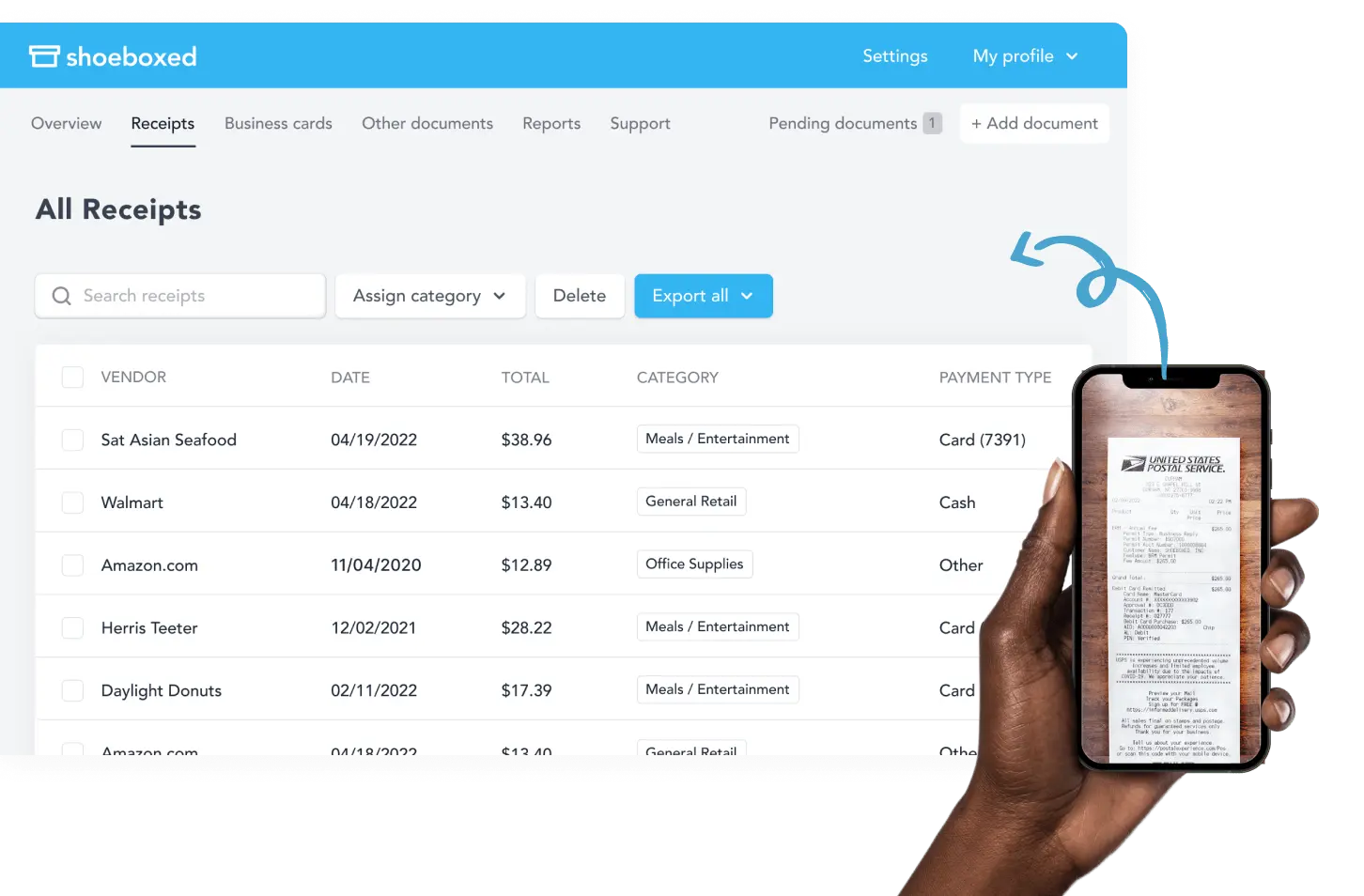
Digitizing receipts makes tracking expenses easier and quicker.
One way to do this is to use your mobile phone or device and the Shoeboxed app. Take a photo of the receipt with your smartphone camera, and the app will upload the data to your Shoeboxed account.
Magic Envelope service
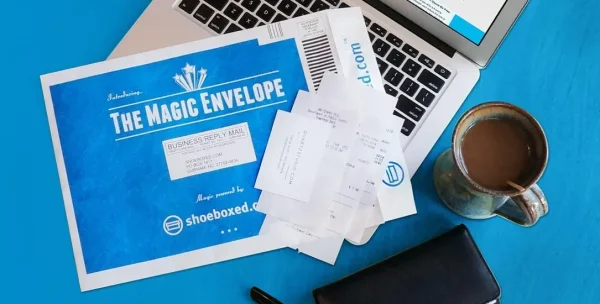
Or, you can outsource expense scanning to Shoeboxed by sending your receipts to their processing center using their Magic Envelope. Their team will scan, human verify and upload the data to your Shoeboxed account for you.
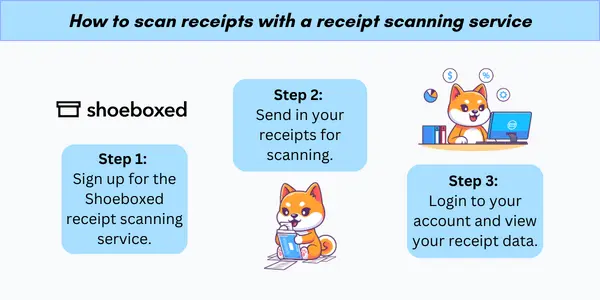
Shoeboxed is the only receipt scanner app that will handle both your paper receipts and your digital receipts—saving customers up to 9.2 hours per week from manual data entry!
Gmail plugin
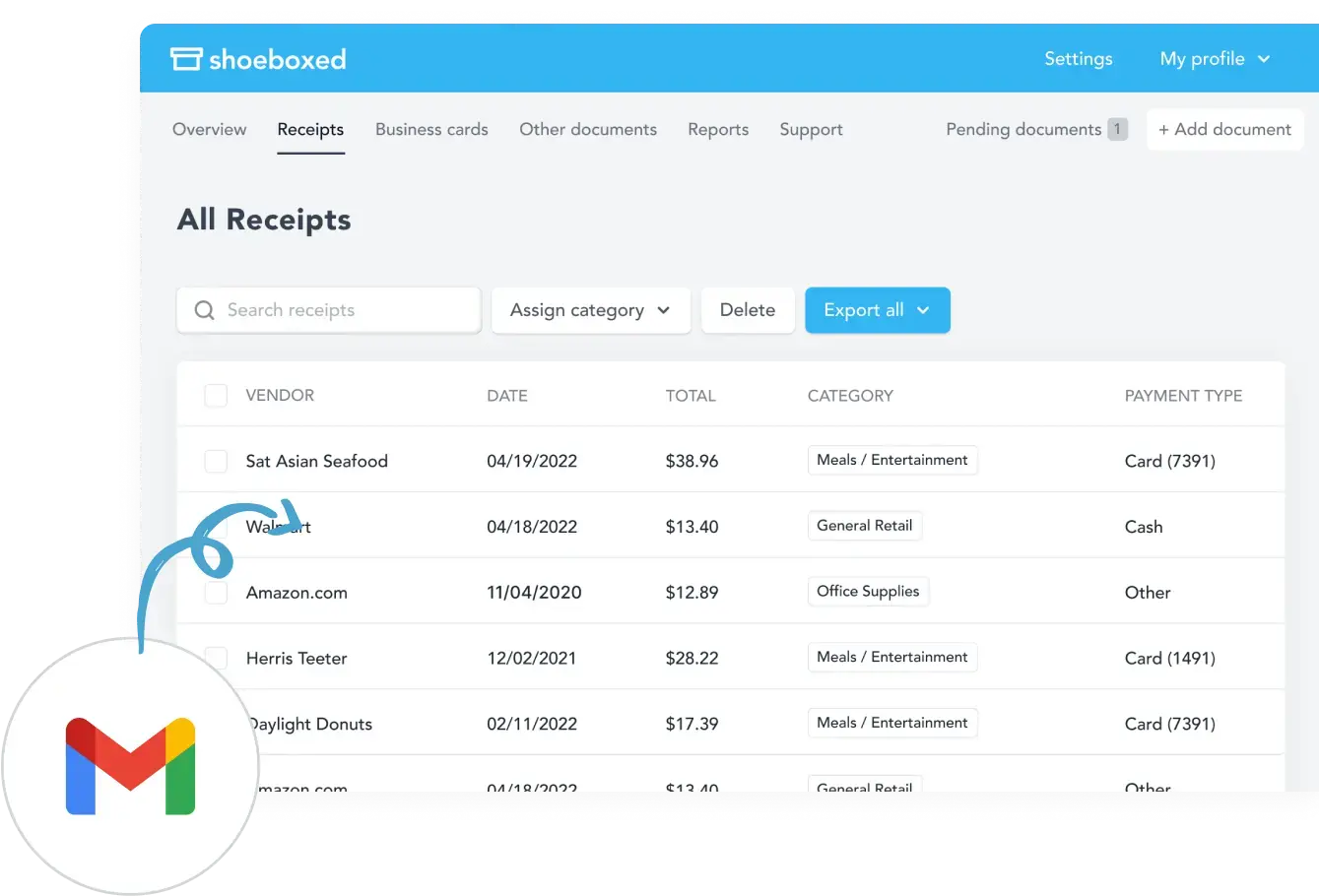
You can also forward digital receipts from your email to your Shoeboxed account. The Gmail plugin will auto-import receipts directly from your inbox to your designated account.
2. Auto-categorizes budget expenses

Once the receipts and expenses are uploaded, Shoeboxed will categorize them into 15 tax or custom categories.
Shoeboxed will scan and categorize your receipts, sorting them into pre-set budget categories like housing, food, transportation, entertainment, etc. You don’t have to manually enter and track your expenses, so your spending will be accurately reflected in the correct categories.
Shoeboxed makes it simple to see all your expenses in one place. Categorizing your expenses makes it easy to see where you’re overspending and where you need to adjust.
Turn receipts into data with Shoeboxed ✨
Try a systematic approach to receipt categories for tax time. Try free for 30 days!
Get Started Today3. Tracks budgets so you stay on track
Using expense management tools like Shoeboxed with auto-categorization makes it easier to allocate spending to the correct budget categories, so you can see where your money is going, adjust as needed, and stay within your budget.
4. Provides up-to-date insights
You can get updated insights into your spending when your receipts are digitized as expenses occur and uploaded to a budget management system. This allows you to monitor your budget closely, adjust your spending habits as needed, and stay on track with your financial goals.
5. Generates expense reports for budgeting
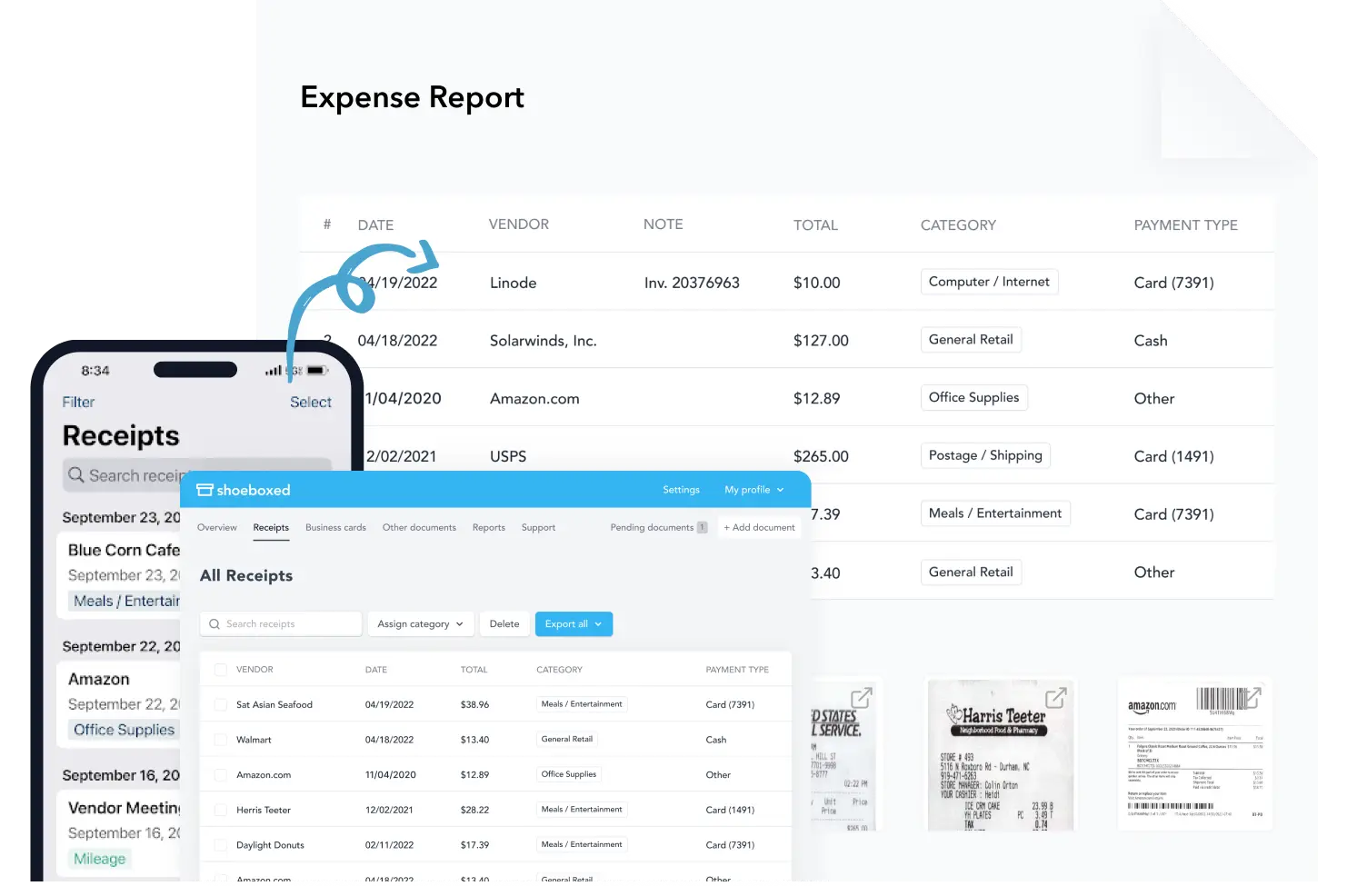
Shoeboxed generates expense reports that break down your spending by category. These reports help you see your spending habits and trends and cut back on areas where you can.
A clear view of your expenses helps you decide where to allocate your income, optimize savings, and manage debt payments.
6. Stores receipts for accountability
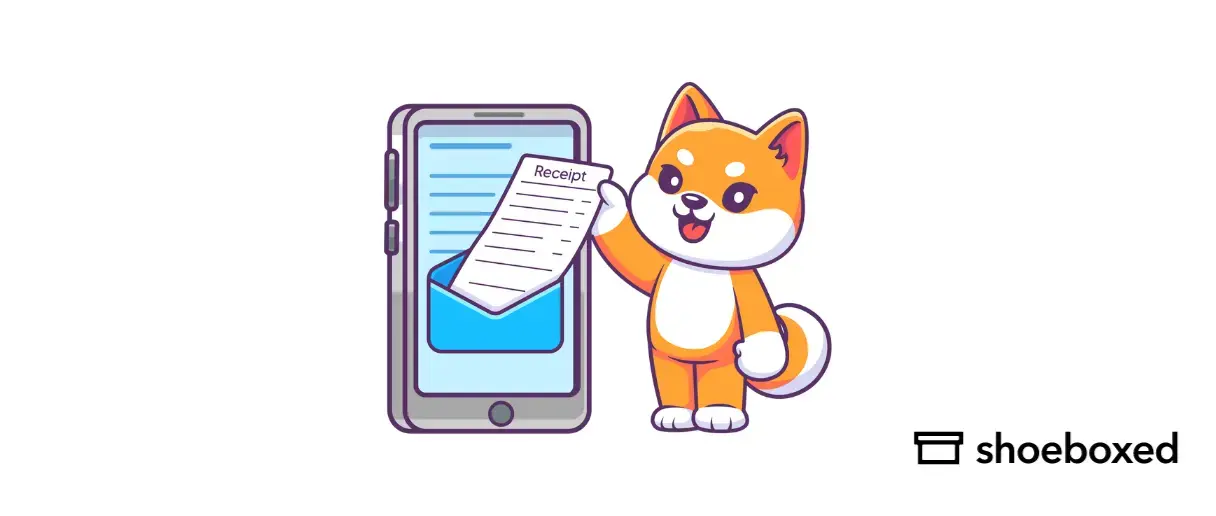
Shoeboxed stores all your receipts in the cloud, giving you easy access to proof of purchase and expense data. This is handy for reviewing past purchases and holding yourself accountable for your budget.
With digital receipts, you can regularly review your spending to see if you’re on track with your budget. Having a digital record of every purchase makes it easier to hold yourself accountable and see where you’re overspending in specific categories.
With Shoeboxed, your budgeting is organized and stress-free; no manual data entry exists. It helps you stay on track with your financial goals by giving you accurate expense data so you can adjust your budget categories as needed.
Tools like Shoeboxed can help with your budgeting, make it easier to track expenses, organize receipts, and achieve financial stability.
Break free from manual data entry ✨
Use Shoeboxed’s Magic Envelope to ship off your receipts and get them back as scanned data in a private, secure cloud-based account. 📁 Try free for 30 days!
Get Started TodayFrequently asked questions
What if I go over one budget category?
If you go over budget in one category, review your budget and adjust the budget percentages for other discretionary spending to compensate for the shortfall. Cut back on non-essential categories like entertainment or dining out to balance your budget.
How often should I review my budget?
Review your budget monthly to see how you’re doing and where you can improve and adjust as needed based on changes to your income or expenses.
In conclusion
Creating a budget that works for you means understanding your spending habits, income, and financial goals. Use the budget categories above to make your budget, which you should track and refine regularly for financial stability and success.
Tools like Shoeboxed make managing your budget categories easy by automating your monthly expenses so you can stay on track. You can achieve your goals and build a safer future with tracking and refinement.
Caryl Ramsey has years of experience assisting in different aspects of bookkeeping, taxes, and customer service. She uses a variety of accounting software to set up client information, reconcile accounts, code expenses, run financial reports, and prepare tax returns. She is also experienced in setting up corporations with the State Corporation Commission and the IRS.
About Shoeboxed!
Shoeboxed is a receipt scanning service with receipt management software that supports multiple receipt capture methods: send, scan, upload, forward, and more!
You can stuff your receipts into one of our Magic Envelopes (prepaid postage within the US). Use our receipt tracker + receipt scanner app (iPhone, iPad, and Android) to snap a picture while on the go. Auto-import receipts from Gmail. Or forward a receipt to your designated Shoeboxed email address.
Turn your receipts into data and deductibles with our expense reports, including IRS-accepted receipt images.
Join over 1 million businesses scanning & organizing receipts, creating expense reports, and more—with Shoeboxed.
Try Shoeboxed today!



